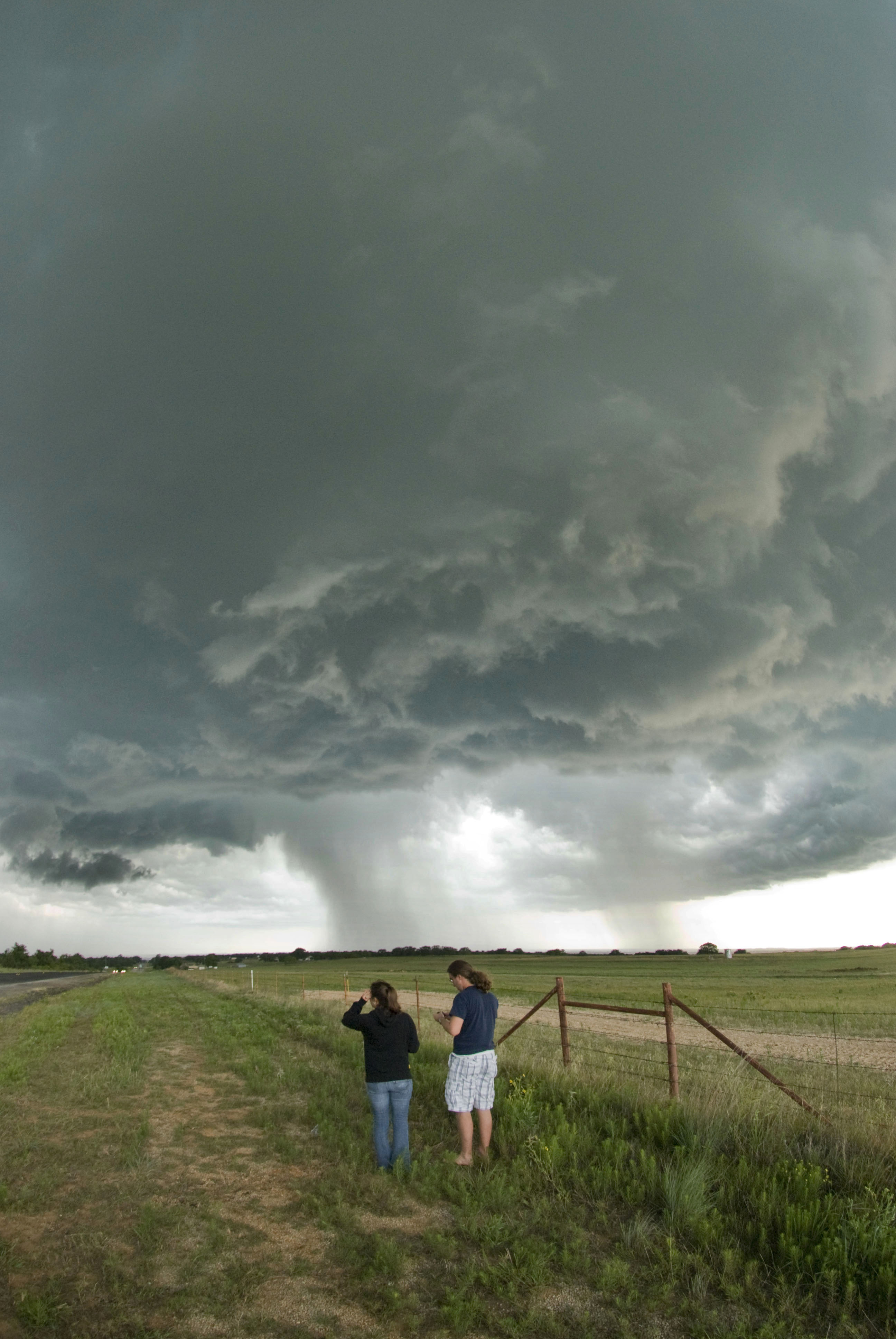Hokie storm chasers experience intensity, and inspire a new major

Sometimes learning happens on the road—literally. That’s the case for the Hokie Storm Chaser class.
The class, Geography 3524, entails a month-long adventure in the specially equipped van while students and teacher travel throughout the Great Plains looking for potentially deadly weather.
The van contains cutting-edge technology so that instructor Dave Carroll and the students can monitor weather satellite updates to predict when and where the next storm will hit.
During the Nov. 12 University Open House, visitors have an opportunity to tour the storm-chasing vehicle and hear College of Natural Resources and Environment faculty and students recount their experiences. The adventurers also will answer questions about meteorology.
The class admissions application website warns, “Only those with a true passion for severe thunderstorms and tornadoes should apply.”
“On most chase trips, we typically experience intense moments,” according to information about the class journeys. “You need to be prepared for this scenario, should it unfold.” But the storm enthusiasts can go days without encountering a storm, said Carroll. When a big weather event occurs, students must leap into action, tracking the storm, and giving Carroll driving directions.
The popularity of the Hokie Storm Chasers class has, in part, led to the creation of a new undergraduate major on weather forecasting that will begin in spring 2012. “This will be the first Bachelor of Science degree program in meteorology in meteorology available in the Commonwealth,” said Department of Geography head Bill Carstensen. “It is certainly timely, (as) weather extremes (bring) much hardship to many people in America and around the world,” he said.
The new innovative degree program will incorporate more geospatial information technology than programs offered at other institutions, according to Carstensen. Instead of focusing on atmospheric patterns, Virginia Tech’s major also will include geographic information systems analysis, allowing students to consider how landforms affect weather patterns.
“We know the surface of the earth influences what’s going on in the atmosphere, but it is very difficult to model that input and figure out how it might impact the weather,” said storm chase leader Carroll.
Students will learn to predict severe weather through education and meteorology, and assess the impact of weather, such as flooding, soil loss, and avalanche danger, on landscapes and the human environment using geospatial science. This relatively new research area is expertise sought by the National Weather Service, said Carstensen. The skills taught in the program will prepare graduates for jobs with federal and state agencies.
The Hokie Storm Chasers van is just one of the tours available at the College of Natural Resources and Environment in Cheatham Hall on November 12. Projects from the Conservation Management Institute, Leadership Institute, Wood Enterprise Institute, and others also will be on display.
Visit the Hokie Storm Chasers blog and Facebook page.
The College of Natural Resources and Environment at Virginia Tech consistently ranks among the top three programs of its kind in the nation. Faculty members stress both the technical and human elements of natural resources and the environment, and instill in students a sense of stewardship, land-use ethics, and large-scale systems problem solving. Areas of study include environmental resource management, fisheries and wildlife sciences, forestry, geospatial and environmental analysis, natural resource recreation, urban forestry, wood science and forest products, geography, and international development. Virginia Tech, the most comprehensive university in Virginia, is dedicated to quality, innovation, and results to the commonwealth, the nation, and the world.
Related Links
- University Open House provides a window to the future
- Potatoes and Virginia Tech students at 9,000 feet
- Virginia Tech's first president and a Union soldier both used the same diary to chronicle the Civil War
- A special flower will grace the University Open House
- Virginia Tech's well-traveled solar home returns to campus for a special engagement




